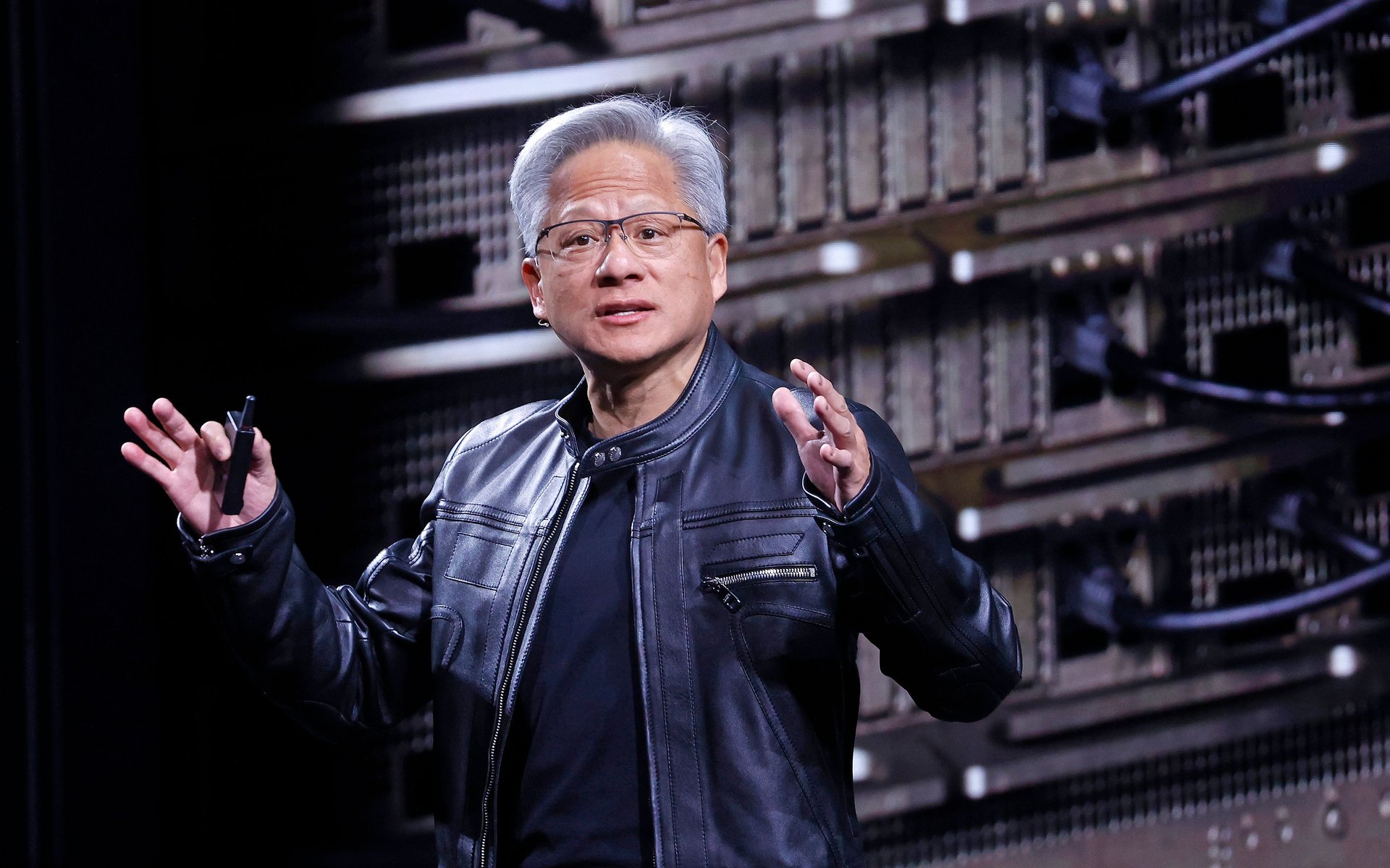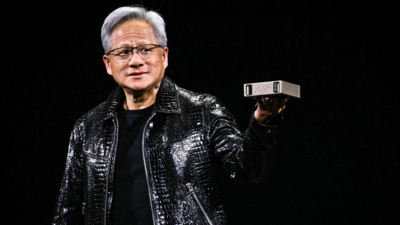Nvidia’s CEO, Jensen Huang, has embarked on a high-profile visit to China amid escalating U.S. export restrictions on advanced AI chips, marking a pivotal moment in the global semiconductor and artificial intelligence landscape. The visit coincides with Nvidia’s announced resumption of sales of its H20 AI chips to Chinese firms after securing U.S. government approval. It also prefaces a major media event on July 16 in Beijing, promising significant announcements about Nvidia’s AI strategy tailored for the Chinese market. Huang’s trip reflects the complex balancing act Nvidia faces between adhering to increasingly stringent U.S. export controls and maintaining a foothold in China — one of the world’s largest and fastest-growing tech markets.
Jensen Huang’s visit is also being closely watched by other global tech CEOs who are grappling with a similar dilemma: how to continue doing business in China, the world’s second-largest economy, without falling afoul of tightening geopolitical boundaries. Nvidia, with its pivotal role in powering AI applications from self-driving cars to advanced data centers, faces more pressure than most. The fact that Huang—the face of Nvidia and a highly respected thought leader in AI—has chosen to engage personally in China signals the importance the company places on maintaining a presence in such a high-stakes market. It also reflects Nvidia’s broader effort to shape perceptions in China, not just among clients but also among policymakers and public opinion.
The timing of the visit is no coincidence. China is ramping up efforts to become self-sufficient in semiconductor manufacturing and AI capabilities, with government-backed initiatives pouring billions into startups and research labs. However, China’s domestic GPU capabilities, while growing, remain behind Nvidia’s advanced architecture. Huang’s trip can thus be interpreted as Nvidia’s effort to ensure it remains indispensable in China’s AI development even as the country seeks alternatives. It serves as both a reassurance and a business pitch—positioning Nvidia as a long-term partner adaptable to regulatory changes yet offering the best-in-class efficiency that homegrown competitors have yet to deliver.
Critics and policy hawks in the U.S. have been quick to question whether tech companies like Nvidia might risk inadvertently aiding authoritarian regimes despite best intentions or legal constraints. However, industry leaders argue that isolating China entirely may lead to unintended consequences—pushing Chinese firms to double down on independence and decreasing U.S. influence in shaping AI ethics, safety, and governance. Huang’s strategy, many suggest, reflects a more realistic view: continuing cooperation in acceptable domains while adhering to limits. In this context, the visit embodies tech diplomacy—a complex balancing act where engagement is not only strategic but potentially stabilizing.

1. Nvidia’s Resumption of H20 AI Chip Sales to China
Nvidia recently received licenses from the U.S. government to restart shipments of its specialized H20 GPU to China. This chip, designed to comply with U.S. regulations that restrict the export of the most advanced AI technology, represents Nvidia’s effort to retain Chinese clients while following export controls. The approval marks a major turnaround for the company, which lost billions in revenue during the suspension. Chinese tech giants like ByteDance, Alibaba, and Tencent are keen customers, eager to deploy powerful but compliant AI hardware as China accelerates its AI ambitions.
2. The Beijing Media Event and Major AI Reveal
Huang’s visit sets the stage for Nvidia’s July 16 media briefing in Beijing, where he is expected to discuss Nvidia’s AI roadmap and possibly unveil new products tailored for China’s regulatory environment. Speculation centers on a China-approved iteration of Nvidia’s Blackwell RTX Pro 6000 GPU, engineered to deliver AI performance within export compliance boundaries. This strategic product launch could redefine Nvidia’s role in China’s AI ecosystem, ensuring the company remains competitive despite geopolitical headwinds.
3. Navigating U.S. Political Pressure and Export Controls
The trip occurs under a cloud of U.S. political scrutiny. Ahead of Huang’s visit, U.S. Senators Jim Banks and Elizabeth Warren sent a cautionary letter urging him to avoid partnerships with Chinese entities linked to military or intelligence operations and to steer clear of blacklisted companies. This is part of broader U.S. concerns that AI technology could augment China’s military modernization. Nvidia must therefore navigate U.S. export rules carefully, balancing compliance and business interests without violating legal prohibitions or political expectations.
4. Huang’s Public Statements on AI and Military Usage
In a recent interview, Huang downplayed fears that Nvidia’s chips would directly aid China’s military, emphasizing that China could develop advanced military technology without reliance on American chips. He framed Nvidia’s export restrictions as potentially counterproductive to maintaining U.S. technological leadership, advocating for open AI software development with global accessibility. Huang’s nuanced stance highlights his role as both an industry leader and pragmatic negotiator amid geopolitical tensions.
5. Stock Market Response and Business Implications
Following the announcement of renewed chip shipments to China and the lead-up to Huang’s event, Nvidia’s stock surged by 4.5%, reaching approximately $171.40 per share. This bullish market response reflects investor optimism driven by Nvidia reclaiming lost revenue and reinforcing its dominance in AI chip markets. An uptick in shares of Nvidia’s Chinese suppliers further underlines the commercial impact of renewed chip flows, signaling resurgent business confidence in the Sino-American AI technology nexus.

6. Expanding Industry Engagement in China
During his Beijing visit, Huang is slated to engage with Chinese government officials, industry leaders, and the media. He is scheduled to attend the China International Supply Chain Expo, which aims to strengthen cooperation across upstream to downstream industries. Nvidia’s presence there underscores its commitment to fostering supply chain partnerships in China, a vital move given global semiconductor tensions. His meetings also include discussions with China’s Commerce minister and other stakeholders critical to Nvidia’s operations in the region.
7. Strategic Chip Development for Compliance and Market Needs
To comply with U.S. export regulations, Nvidia has developed specialized chip models like the H20 and RTX Pro designed specifically for China’s market. These chips balance performance with regulatory requirements, enabling Nvidia to supply powerful AI hardware without violating prohibitions on cutting-edge technology exports. This product strategy ensures Nvidia stays relevant amid tightening controls, satisfying demand for AI capabilities in China’s booming tech ecosystem.
8. The Delicate Balancing Act: Business Growth vs. Regulatory Constraints
Huang’s visit symbolizes Nvidia’s broader challenge: sustaining rapid growth in China’s tech sector while adhering to U.S. export policies designed to limit China’s access to strategic technology. This requires deft regulatory navigation and diplomatic engagement. Industry analysts note that Nvidia walks a fine line, needing to maintain good relations with both Washington and Beijing, securing market access without triggering political backlash in either country.
9. Future Outlook: Nvidia’s Role in Global AI Development
As AI technology evolves into a global strategic asset, Nvidia’s actions in China will shape the continent’s AI competitiveness and technological landscape. By tailoring products and strategies for regulated markets like China, Nvidia positions itself as a central player in the global AI ecosystem. Jensen Huang’s China visit and forthcoming announcements mark a significant chapter in tech diplomacy and commercial innovation, illustrating how leading companies adapt and thrive amid geopolitics and technology rivalries.

Conclusion
Jensen Huang’s China visit amid U.S. export restrictions epitomizes the complexities of navigating the global AI semiconductor market during intense geopolitical competition. Nvidia’s resumption of H20 chip sales, the Beijing media event, and ongoing negotiations signal the company’s commitment to maintaining and expanding its presence in China, while carefully respecting U.S. regulatory frameworks. The outcome of these efforts will influence not only Nvidia’s commercial trajectory but also the global balance of AI technology leadership in an increasingly divided world. As Nvidia advances its AI ambitions on multiple fronts, Huang’s trip represents both a business opportunity and a high-stakes diplomatic endeavor, watched closely by governments, investors, and the tech community worldwide.
Inside China, Huang’s presence is being welcomed enthusiastically by companies and tech executives who see the move as Nvidia recommitting to its long-standing relationships in the region. Nvidia has supplied GPUs to China’s largest tech firms for years, becoming synonymous with deep learning and AI acceleration. Local reports have described Huang’s arrival at Beijing Capital International Airport as “symbolic,” rekindling confidence in tech cooperation despite increasing rifts between Washington and Beijing. Photographs of Huang visiting data centers and speaking with developers are being widely circulated in Chinese media, adding to his celebrity status among the country’s young engineers and AI enthusiasts.
One of the key aspects of Nvidia’s China strategy lies in cooperation with local manufacturers and cloud providers. By allowing Chinese firms to integrate Nvidia’s regulated chips into their server architecture and AI platforms, Nvidia sustains market relevance while ensuring its IP remains protected within export boundaries. It represents a hybrid model of engagement—where local collaboration, cloud-based distribution, and tailored hardware reduce the company’s exposure to sudden regulatory turns. Such cooperation also ensures Nvidia avoids putting all its eggs in a single geopolitical basket, fostering resilience against future sanctions or supply chain disruptions.
Looking ahead, Huang’s visit may well reshape the contours of AI technology sharing in the era of technology sovereignty. For nations and companies alike, managing the balance between strategic autonomy and global cooperation will be critical. Nvidia’s presence in China demonstrates that despite rising digital nationalism, the complex web of interdependence—between innovation, infrastructure, and commerce—is not easily unraveled. While policies may divide governments, shared interests in technological progress continue to bind the business community. Huang’s China trip underlines this deep interconnectivity, serving as a case study in how global tech leaders must adapt, negotiate, and lead in a fragmented yet irreversibly linked world.
Follow: Jensen Huang

